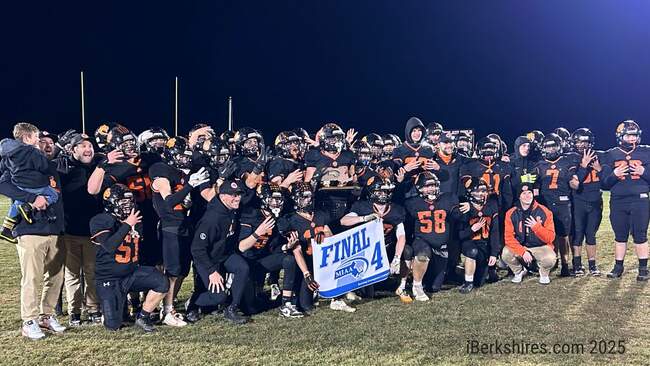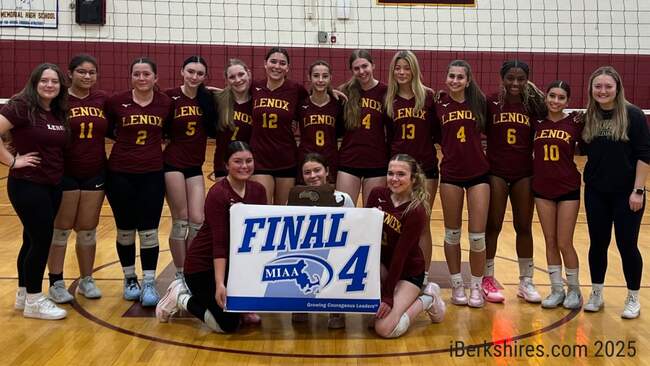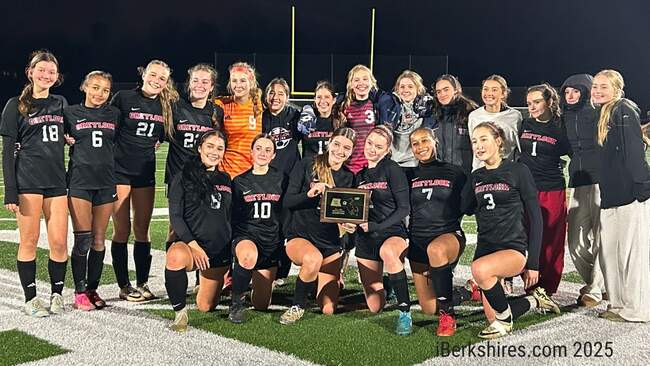Solarize Mass Looking for Williamstown Homeowners
 Tom Welch's home in Williamstown hosts a solar array that produces enough electricity for his family's average use. Tom Welch's home in Williamstown hosts a solar array that produces enough electricity for his family's average use. |
WILLIAMSTOWN, Mass. — It has been not quite a year since Tom Welch and his family began leasing solar photovoltaic panels for their home on Bridges Road, and things are not going quite as planned.
They're going better than expected.
"They guaranteed 90 percent of our electricity needs [from solar], and it's actually been producing over 100 percent of our average use," Welch said recently.
"There are different ways you can do [the financing], but the way we did it there was absolutely no upfront cost involved. ... Basically they are taking the energy credits for the system and using our home and we're kind of paying for electricity through the solar photovoltaic company."
Welch's photovoltaic company is Colorado-based Real Goods Solar, which also is the company working with a statewide clean-energy initiative to install residential solar arrays in two Berkshire County towns this year.
Lee and Williamstown are the local communities — among 10 throughout the commonwealth — participating Solarize Mass, a 3-year-old partnership of the Massachusetts Clean Energy Center and the Massachusetts Department of Energy Resources.
Organizers will hold their second Williamstown meeting of the spring on Monday, June 10, at 7 p.m. at the Williams Inn.
The program's "Meet Your Installer" night is followup to May 14's Solar 101. But event planners are quick to note that those who didn't attend the first meeting can still join the program — in fact, attending the meetings does not make you ineligble to join the program.
"Regardless of whether they go to Solar 101 or Meet Your Installer night, people can get into the program just by telling us they want to," said Jake Laughner, the "Solar Coach" for Solarize Mass in Williamstown.
"The only restriction is the home has to be in Williamstown. Beyond that, we're taking all comers."
The president of Williamstown's COOL Committee said the program will be taking those comers for a few more months.
"The deadline for having signed a contract is Sept. 30, so it's absolutely not too late," Wendy Penner said. "We're just getting started."
The numbers suggest the solar industry in general is really starting to take off.
According to the Solar Energy Industries Association, about 3,300 megawatts of solar photovoltaic capacity were installed nationwide in 2012 — a 76 percent increase over the capacity installed the year before. Looking further back, there were closer to 100 MW of solar capacity installed in 2006. In terms of homes, there were 82,000 residential installations nationwide in 2012 — including Welch's.
"We've always been thinking about it," he said. "Ideally, we would have liked to purchase the system from a local contractor, but economically, that wasn't feasible. When other kinds of plans started to become more popular, we looked at those options. We probably started looking at [Real Goods Solar] last May and it only took a few weeks.
"The whole process from start to finish was probably over in six weeks."
In just less than a year, Welch's rooftop solar array produces enough clean energy to remove nearly 12,000 pounds of carbon dioxide emissions from coal-burning electric plants.
And thanks to the the power purchase agreement with Real Goods Solar, Welch's electric bill will remain constant for 20 years, no matter what happens to the market rate for electricity. The family still is "on the grid" and would maintain its electricity in the event of a malfunction in the solar-power system, but as long as it does not exceed the average usage rate at the start of the PPA, the only money the family will pay will be the monthly payment it had from day one.
In reality, Welch said his family is using less power today than it did 12 months ago. Like most homeowners who explore solar energy — including those who participate in the Solarize Mass inititiative — Welch had a home energy audit performed before the installation.
"We wanted to do that anyway," he said. "It helped us bump up the installation in the attic and tighten up a few drafts. We switched some smart-power outlets for electronics.
"The bottom line is we reduced our gas energy bill, and we're intentionally using less electricity than we were before we were producing it ourselves. That was part of the goal — to reduce our consumption as much as we could."
Sometimes, homeowners will go the other way: maxing out the size of their solar array and changing some of the energy needs from greenhouse gas-producing fossil fuels to solar energy.
"Some people will say, 'Hey, I can get an electric car,' " said Jim Oliva, a local sales representative for Real Goods Solar. "We have had people switch to electric heat.
"We've oversized systems and done additions to existing systems. Some people will add on after the fact. Some people will do it beforehand with the idea they're going to [add usage]. We help as best we can. We have some really smart engineers, and if I said, 'Can you give me a scenario where someone put in electric heat for a 2,000-square-foot house?' They can give us a ballpark how much the solar system will have to be increased."
Most people opt for systems like Welch's that come close to their average electricity needs going into the process.
"There's no point in putting in more than you need," Laughner said. "What happens if you produce more than you need is your meter spins backward."
That is because excess electricity produced at a residence — rather than being stored in a battery — goes "on the grid." When the sun stops shining, the home gets its electricity just like anyone else.
On sunny days, when the home is producing more power than it uses, "you'll start building up credits with your provider, usually National Grid," Laughner said. "Usually in the wintertime or if you get a cloudy month, you'll use those credits up. Basically, you want to make it a wash over the course of the whole year.
"If the array is too big, you're just going to generate more credits, and it's not like the electric company is going to write you a check for the difference. It would be a very altruistic thing to do (to produce more than you need), but what it would do is make your system more expensive and increase the payback."
There are a number of ways to obtain solar panels, from no-money down PPAs to ownership. And there are a couple of different ways to install panels: on the roof and on the ground. The location of your panels will be determined by exposure to the sun. Generally speaking, ground-mounted panels are more expensive because of the excavation costs, Laughner said.
Given the proliferation of slate roofs in this part of the world, Real Goods Solar is consulting roofing contractors to figure out how to handle those installations, Oliva said. It's not impossible to install panels on a slate roof, but it is more complex, he said.
Of course, if your property is particularly shady, residential solar panels may not be for you, but that does not mean you cannot get involved with the technology.
"We have a plan, and the COOL Committee is actually taking names of people who would be interested in participating in a community solar garden," Laughner said. "We'd get some land somewhere and set up a fairly significant solar array, and it's like a cooperative for people who can't host an array on their property."
Penner — whose committee's name is short for Carbon Dioxide Lowering — said the cooperative idea is just the germ of an idea.
But then again, so was the COOL Committee when it started in 2001.
Penner is excited about the fact that more than 100 Williamstown residents have expressed an interest in Solarize Mass and 35 — as of Tuesday — already had scheduled solar assessments of the home.
After more than a decade of battling global climate change at the grassroots, those numbers are encouraging signs.
"Seeing what's going on on the national stage and some of the initial impacts of climate change we're starting to see, it can be frustrating," Penner said. "But what's exciting is seeing Massachusetts be No. 1 in the nation in energy efficiency.
"I think this is part of a real transformation that we're just at the beginning of. It can be frustrating, but moreso it's rewarding that we're starting to see things happen."
Solarize Williamstown's next meeting will be Monday, June 10, at 7 p.m. at the Williams Inn. Contact the program at solarize@williamstown.net.
Tags: climate change, electricity, green technology, solar,















